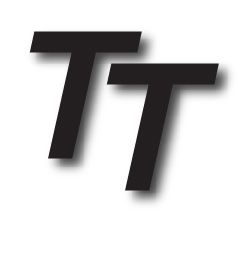Approval & Traceability
On the 1st August 1998 the towbar industry was revolutionised by the introduction of directive EC94/20. This directive specified that all towbars fitted to any small passenger vehicles built after this date were required to be tested and conform in accordance with set parameters, with the aim of standardising towbar design and manufacturing whilst also wanting to ensure these guidelines would maintain safe practice amongst the towing industry. The introduction of EC94/20 meant that the design process of towbars was modernised and certain criteria had to be met as part of forming an approved towbar. These conditions governed that the mounting position of the towbar on the vehicle was to be strictly in accordance with the vehicle manufacturer's specified points. Furthermore the towball also had to be located in a set position within relation to these mounting points or located 350mm to 420mm from the ground whilst the vehicle is laden. You may be forgiven for thinking that all towbars must therefore be the same in design as they have to be positioned to the same points on the vehicle. This is certainly not the case and Tow-Trust take great pride in their unique design work, which has meant we have forged a strong reputation amongst trade professionals within the towing industry for manufacturing towbars that tick all the boxes; easy to fit, neat, unobtrusive in appearance and structurally strong.
Once designed a sample towbar is manufactured and 'fit checked' on a vehicle before being used for the test phase of the approval. This requires the towbar to be bolted to our 'in-house' test rig and subjected to a repetitive 2 million cycle fatigue test that places the towbar under loads designed to replicate the rigours of every day towing. Once this procedure is finished, the towbar is independently checked by one of the main governing bodies within the UK, the VCA (Vehicle Certification Agency). They meticulously inspect the towbar for any hairline cracks and signs of damage which would result in an instant fail. Once the VCA have scrupulously inspected the towbar and are satisfied it has passed all checks, the relevant paperwork is submitted and the towbar is given a unique type approval number ready for production and sale.
In 2011, certain N1 & N2 category vehicles started to be added to type approval. All new Tow-Trust commercial & non-commercial towbars are fully type approved.
On the 29th October 2012, an additional requirement was placed on the type approval phase of a towbar, and EC94/20 was superseded by Regulation 55. This encompassed all parts of the previous EC94/20 directive with the addition of a separate secondary coupling test and further administrative requirements. All Reg 55 approved towbars carry a new label format which can be seen below;

All Tow-Trust Towbars designed and manufactured from the 1st August 1998 comply with all required legislation. Should you require any type approval information regarding our towbars please do not hesitate to contact us.
* Category M1: Vehicles designed and constructed for the carriage of passengers and comprising no more than eight seats in addition to the driver's seat.
* Category N1: Vehicles designed and constructed for the carriage of goods and having a maximum mass not exceeding 3.5 tonnes.
* Category N2: Vehicles designed and constructed for the carriage of goods and having a maximum mass exceeding 3.5 tonnes but not exceeding 12 tonnes.
